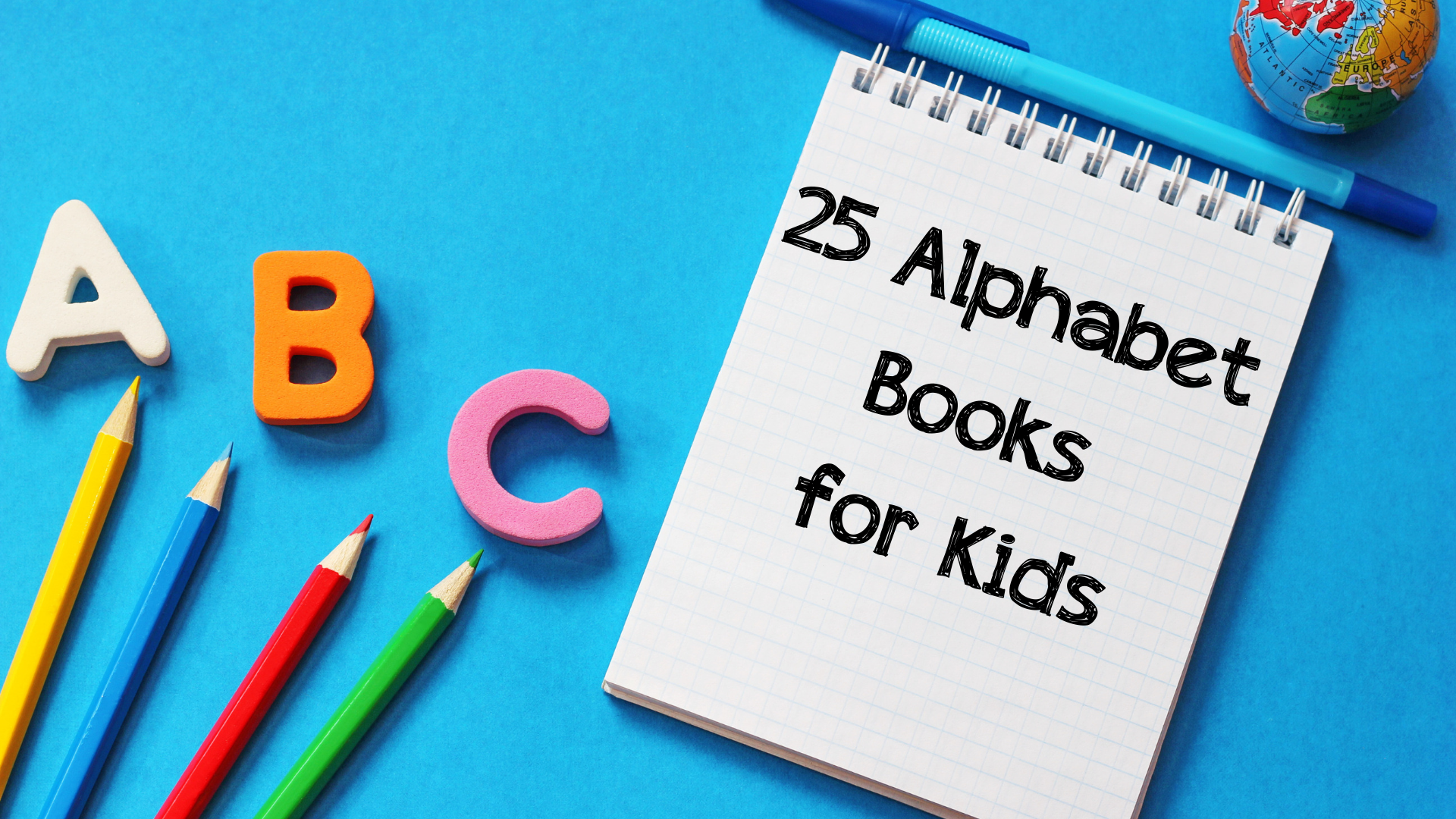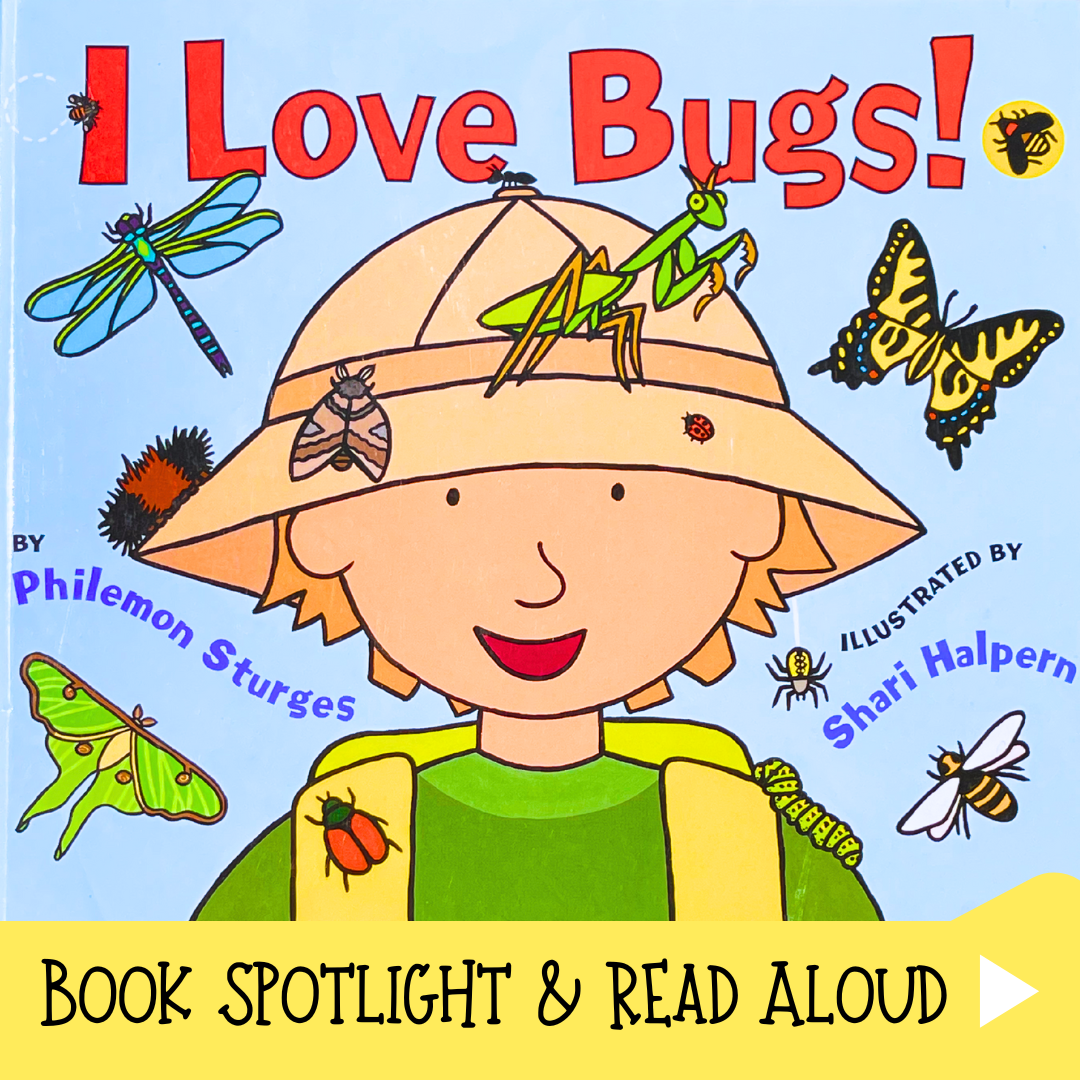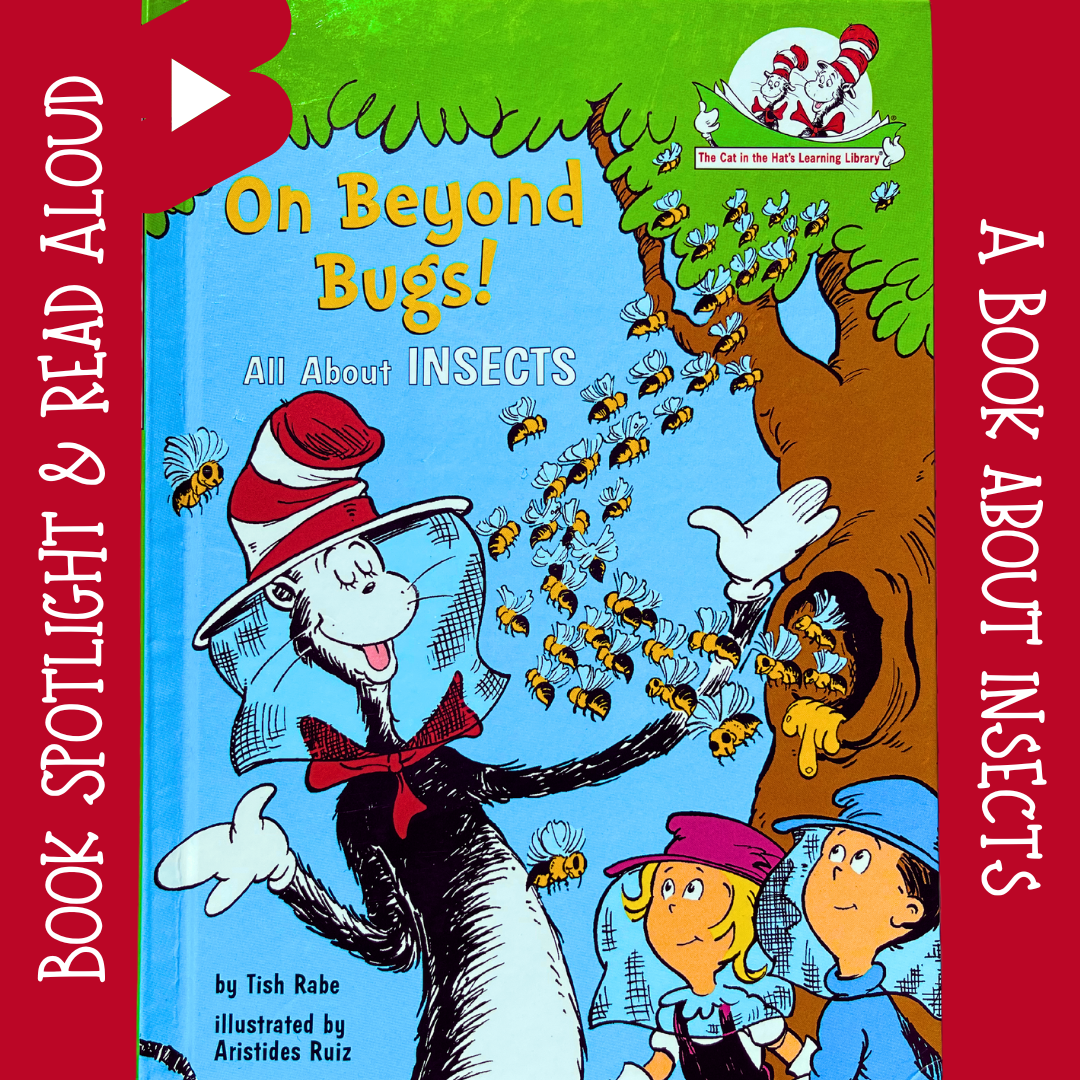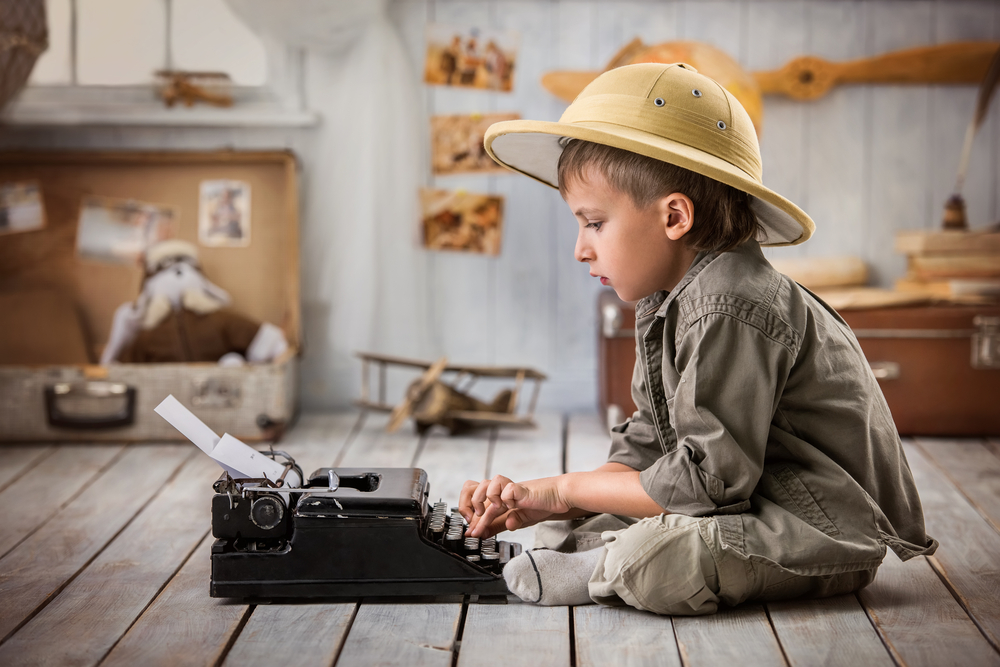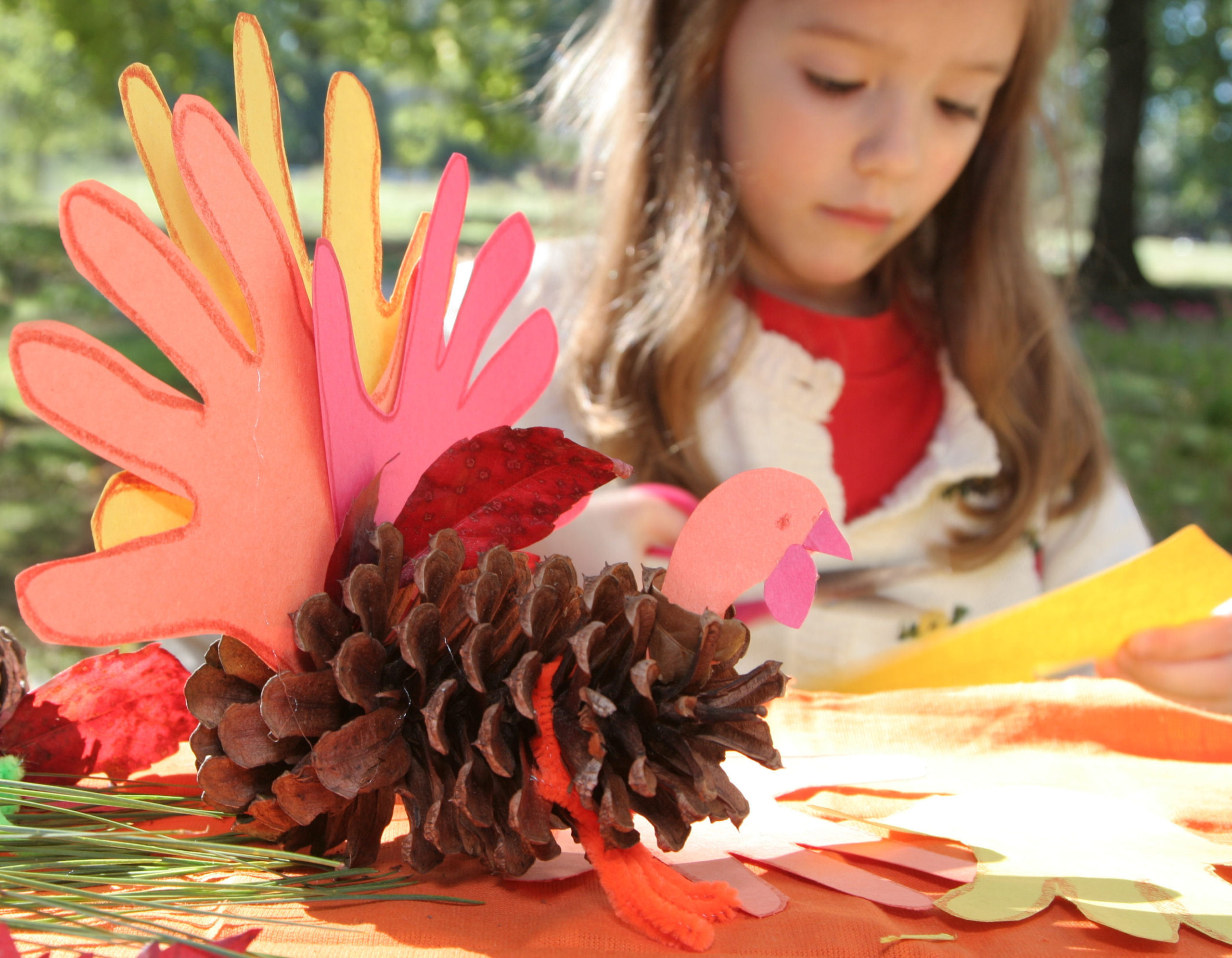A Day with Emilia
A BOOK ABOUT VISUAL IMPAIRMENT
Welcome to the STEMHAX Book Spotlight. Today we are exploring A Day with Emilia written by Estefany Vargas and illustrated by Emily Wetterich and Nick Brummer. This book would be an excellent addition to any early childhood classroom or homeschool library.
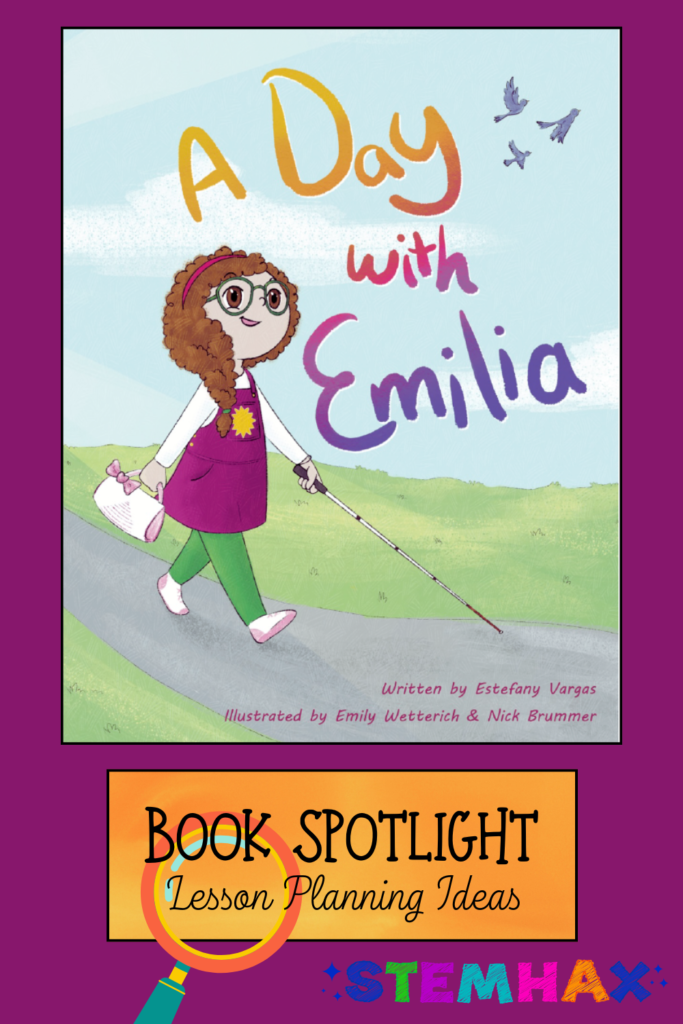
Kids enjoy reading the same picturebook over and over again. The illustrations in a picturebook make a huge impact on their visual learning. Having a physical copy on hand is a great idea and encourages re-reading. This version can be purchased on Amazon.
Overview
A Day with Emilia is a story about a five-year-old little girl with visual impairment. Emilia is like her friends; she loves to learn, play and discover the world around her. “…But there is something different about her. She uses glasses, magnifiers, and a white cane.” Come and enjoy this beautifully illustrated picturebook and learn how Emilia uses her support tools.
“A story introducing how a child with visual impairment may experience the world.” – excerpt from A Day with Emilia.
A Day with Emilia – Read Aloud
The STEMHAX read aloud on YouTube is perfect for children who want to follow along with the book.
Exploring A Day with Emilia with Young Learners
First, start with a book cover inspection. Show children the cover of the picturebook and ask, “what do you think this book is about?” Follow this with some open-ended questions to get their minds warmed up. Here are some suggestions:
- Who do you think about when you see someone wearing eyeglasses?
- Why do some people wear eyeglasses?
- How do you use a magnifying glass?
- What are some activities that you like to do with your friends?
- What are some of the picturebooks you enjoy reading?
After reading the book for the first time, ask more open-ended or fact checking questions. Remember there are no wrong answers. Some questions might include:
- Why did the author name the book A Day with Emilia?
- How did Emilia feel about her helping tools?
- What were some of the tools Emilia used to assist her through the day?
- What are some things Emilia likes to do?
- How does Emilia use her magnifier?
- How does Emilia use her cane?
- Why do you think Emilia says “…I explore the world differently”?
- How does Emilia feel about having visual impairment?
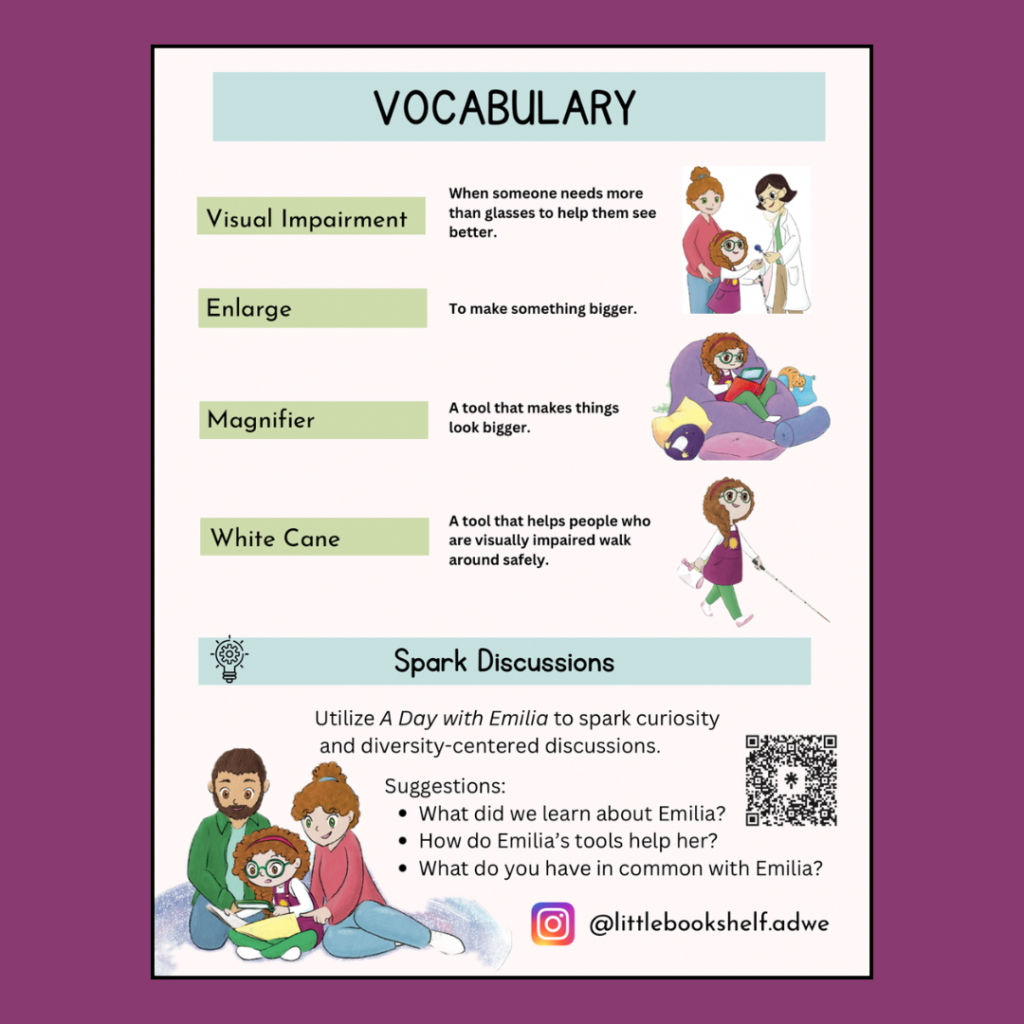
Extend the Lesson
The following resources are a fun way to extend the reading of A Day with Emilia. Here are some free hands-on activity ideas to get you started.
A Day with Emilia Coloring Page – FREE Download
Free coloring page with the original art from A Day with Emilia. Visit the STEMHAX TPT Store and download for free.

Do I Need Glasses? – SciSHow Kids
The following video is from SciShow Kids. Jessi and Squeaks explain why some people see things blurry. They do a science experiment with a magnifying glass; an activity teachers and parents can replicate easily to give children a hands-on science experiment.
How Your Eyes Work – Nemours KidsHealth
The next video can extend learning on how the eyes work. Kids are naturally curious and will enjoy Chloe and the Nerb cartoon from Nemours KidsHealth. This video is advanced and would do well for kids a little bit older than five-year-old Emilia, however, kids will be entertained and if they learn only a few things about how the eye works it is a learning success! (This is also a good teach the teacher refresher video).
Let’s Get Our Eye’s Checked – Caitie’s Classroom Field Trip
Virtual field trips are a wonderful way to take children on an adventure. Super Simple Play with Caitie takes us along as she visits her optometrist and learns how our eye health is tested.
Alex Learns to Use a White Cane
Alex Smyth is not blind, he has visual impairment. He is learning how to use a white cane. In this video he is sharing his experience. This is a similar cane to what Emilia uses in A Day with Emilia.
Hands-On Exploration
White Cane: If you know someone who uses a white cane, invite them into the classroom to share their experience, as a guest speaker. Kids will want to roll play and try using a visual impairment tool. If you don’t have a white cane, you can use a yard stick or similar item. Allow students to take turns. After watching Alex, kids will be able to simulate white cane walking.
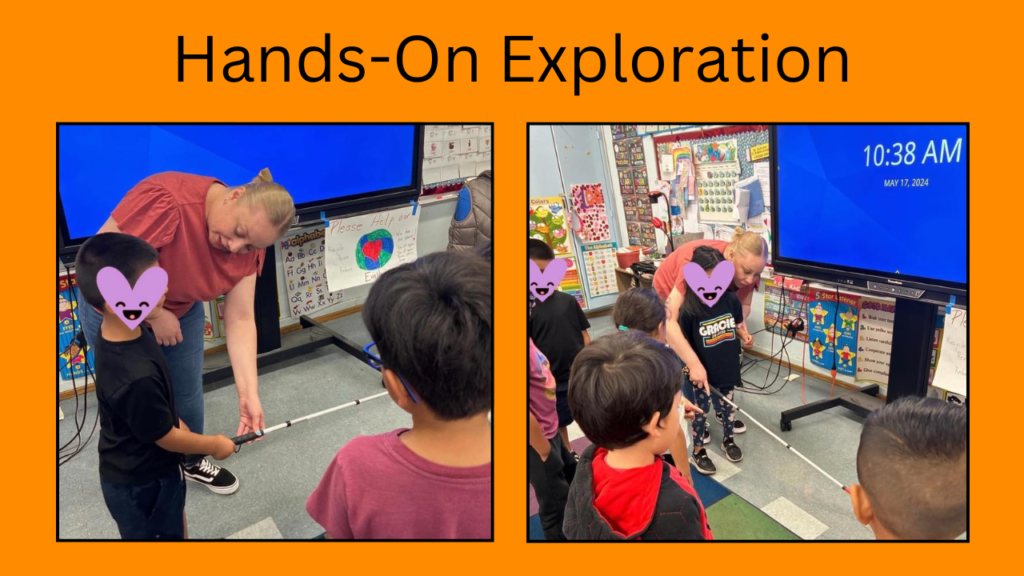
Magnifying Glass: We use magnifying glasses in science all the time. Find some small font books, or create a document with really small fonts. Ask students to read them before using the magnifying glass. Then allow them to use them as readers the way Emilia uses hers to read a book.
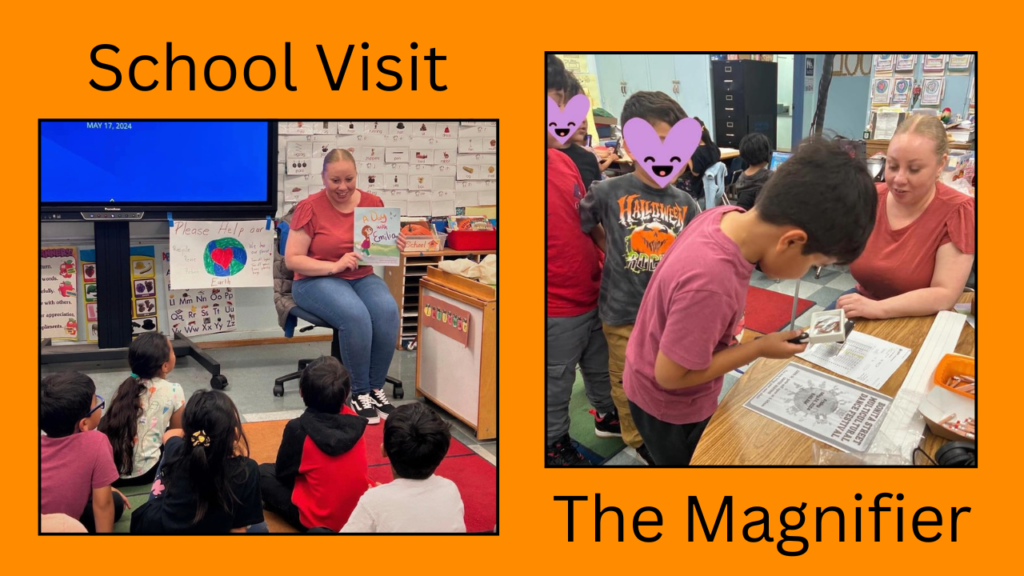
FREE Read Aloud Book Report
Need accountability in a listening or iPad center? Check out this FREE Book Report available in my TPT Store for download.
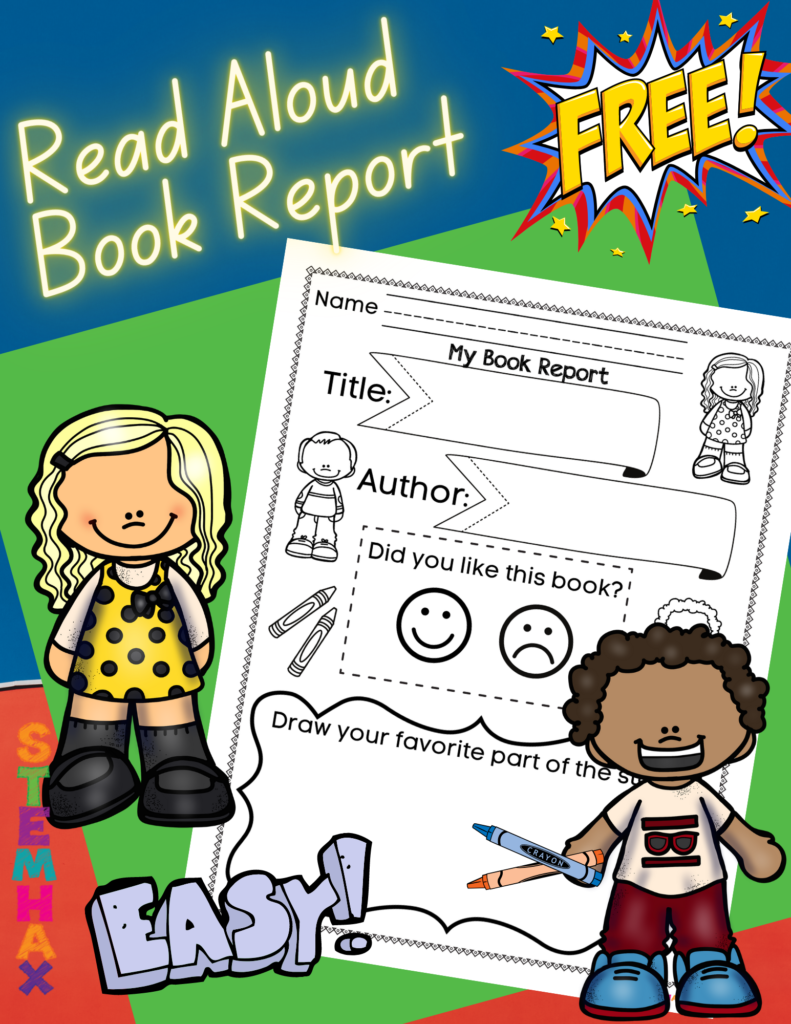
Q&A With Estefany Vargas
During the collaboration process I was able to interview Estefany. Here is a little of how A Day with Emilia was born into a picturebook.
STEMHAX: Please share a little about your background.
ESTEFANY: I am a wife, cat mom, and an early childhood educator at heart. I was born with albinism and nystagmus– an eye condition that results in involuntary eye movement that causes visual impairment, but I was fortunate to grow up with supportive parents. As a child development major and someone who works with preschool-age children, I recognize the difference that a supportive family and teachers can make. My hope is to positively impact children’s lives and facilitate diversity-centered discussions. On my “down time”, I am likely with my husband at the beach, or surrounded by cats somewhere–probably with a matcha latte in hand.
STEMHAX: How did you come up with the A Day with Emilia picturebook idea?
ESTEFANY: I was asked to write a diversity children’s book for a Teaching in a Diverse Society college course and because of my own experiences, this idea unraveled quite naturally. I enjoyed journalism and creative writing from 7th-12th grade, so it was like this project reignited that passion in me.
STEMHAX: Who will benefit from reading this picturebook?
ESTEFANY: Young children in general would benefit from this book because it creates an opportunity to spark discussions surrounding disability, learn about visual impairment, and foster empathy. However, I believe children who are visually impaired would highly benefit from relating to the main character of the story.
STEMHAX: What age group is the book written for?
ESTEFANY: Kindergarten (age 5) is most developmentally appropriate, but children ages 4-7 could also benefit from the learning opportunities A Day with Emilia has to offer.
STEMHAX: Creating successful picture books for children is not an easy task. What inspired you to become a children’s author?
ESTEFANY: To be honest, my inner child would have loved to have something like A Day with Emilia available. Growing up with a visual impairment can come with challenges and unwanted comments from peers because as children they simply do not understand differences that come with disability so I think that is important to talk about in a child-friendly way. I think this is my way of combining my passion for child development and personal experiences to create something helpful for children and families.
STEMHAX: Will there be more books in the future?
ESTEFANY: Although there are no immediate plans, I hope to create more once I finish my degree, later this year.
STEMHAX: Do you have a memorable book from your childhood?
ESTEFANY: The Rainbow Fish by Marcus Pfister! I loved the story of friendship and sparkly illustrations. I remember my mom reading the Spanish version of that book almost every night for a long time.
STEMHAX: What is your favorite picture book?
ESTEFANY: As an adult, I enjoy using Todd Parr books because they are simple, but deliver a big message so effortlessly. One of my favorites is The Family Book.
STEMHAX: Where can people find you? (website, YouTube, etc.)
ESTEFANY: https://linktr.ee/Littlebookshelf.adwe
STEMHAX: Is there anything else you would like to add?
ESTEFANY: I’d like to share a few words for parents who have children that are visually impaired because I know that can feel intimidating: With your love and support, they will be okay. I have used glasses, magnifiers, large print books, large print worksheets, and more reasonable accommodations in school and work. I have used a monitor to enlarge what my laptop screen shows throughout college–similar to a CCTV. We have come such a long way with technology that I truly believe families can find resources and tools to help children continue to be resilient!
Thank You!
We appreciate you taking the time to learn about this picturebook. Please consider following our YouTube Channel for more read aloud books relating to academic interest subjects or signup for our newsletter to stay informed of STEMHAX happenings.
This post contains affiliate links; if you make a purchase, I may make a small commission at zero cost to you. THANK YOU!!
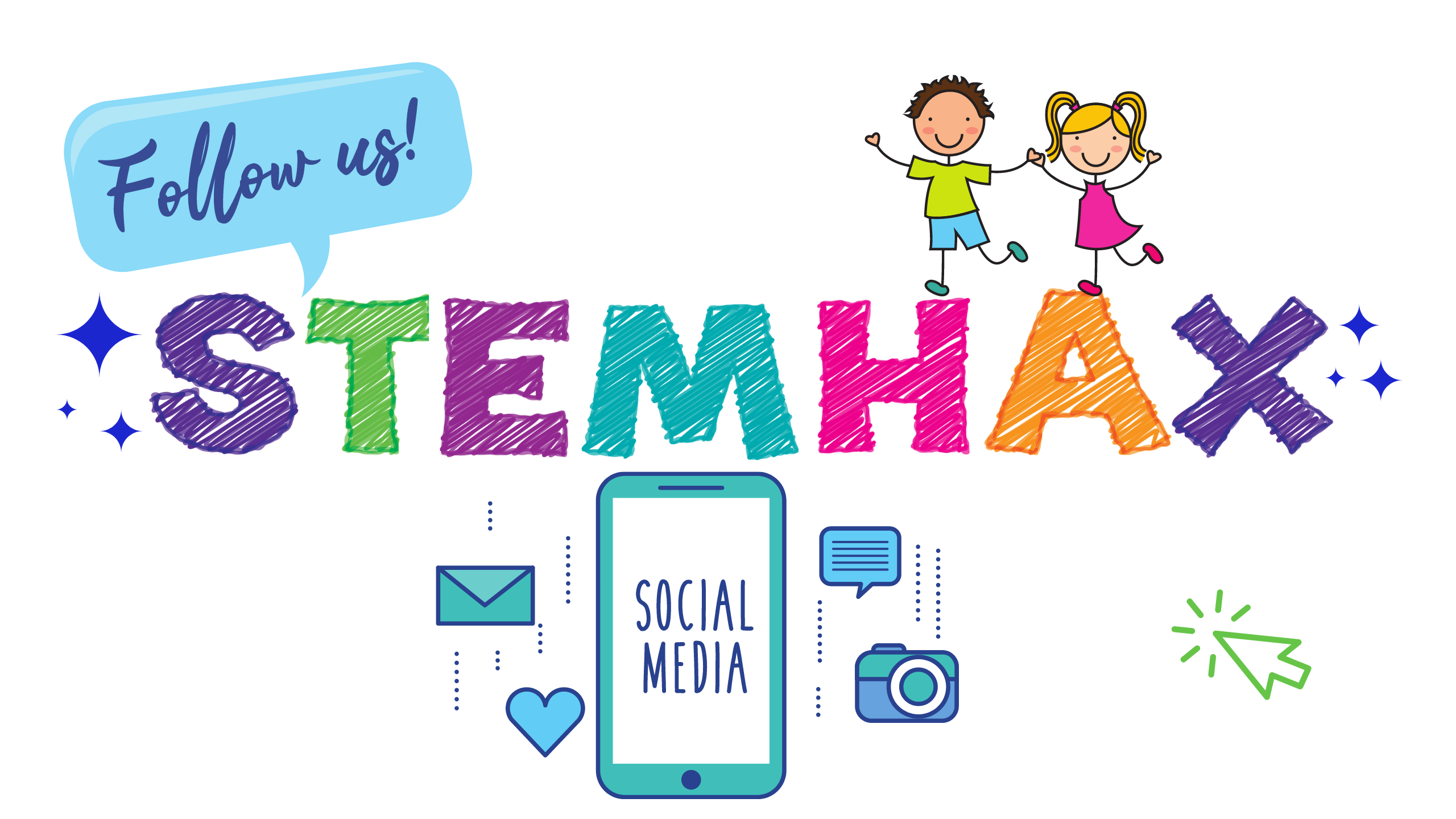
Join our e-mail list for new book spotlights, giveaways and more. We will never sell or share your contact information. Unsubscribe at any time.


